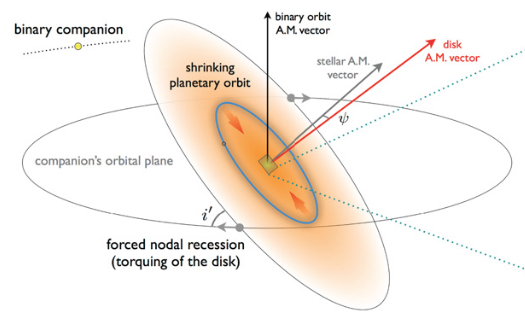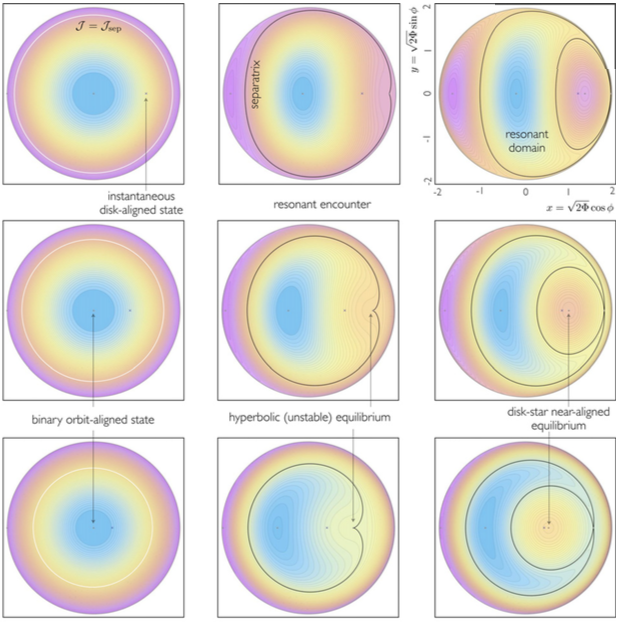SPIN-ORBIT MISALIGNMENTS IN EXTRASOLAR PLANETARY SYSTEMS
The observational determination that hot Jupiters are frequently misaligned with respect to the spin-axes of their host stars has significantly complicated their formation theories. While initially these observations were interpreted as supportive of a violent origin to hot Jupiters, in Batygin (2012) we proposed an alternative hypothesis, namely that the misalignments between planets and their stars are generated early on, during the disk-hosting stage. Within the framework ofthe envisioned mechanism, companion stars gravitationally torque the disk, taking it out of alignment with its host star, thereby allowing planets to inherit the excited inclination.
In Batygin & Adams (2013), Spalding & Batygin (2014) and Spalding et al. (2014), we showed that even though young stars should be aligned with their disks during the earliest stage of star formation (the so-called embedded phase), the disk-torquing mechanism can generate the entire observed range of spin-orbit misalignments during the classical T-Tauri stage of evolution. Subsequently, Spalding & Batygin (2015) showed that the correlation between stellar obliquity and effective temperature, first pointed out by Winn et al. (2010), can be entirely attributed to the observed mass-dependence of the magnetic field morphology of T-Tauri stars (Gregory et al. 2012). Finally, in Spalding & Batygin (2016), we showed that when applied to sub-Jovian planetary systems, the disk-torquing mechanism can trigger dynamical instabilities, thereby explaining why single planet systems detected by the Kepler mission have a statistical predisposition for large spin-orbit misalignments, whereas multi-planet systems tend to be aligned with their host stars (Spalding et al. 2018). Further work on how hot Jupiters’ apparent loneliness and fits into this picture was outlined in Spalding & Batygin (2017). Cumulatively, this series of papers has presented a coherent new narrative for spin-orbit coupling in young planetary systems.



